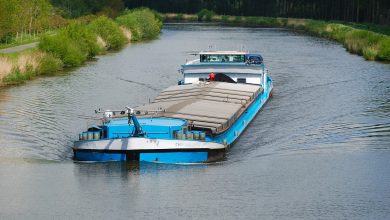Navigating the Depths: Unveiling the Mask of Ship Maneuverability

Ship maneuverability stands as a crucial aspect of maritime operations, crafting a tale of precision and control across the aqueous stage. In this blog, we’ll delve into the contents of ship maneuverability and unveil the reasons why it holds paramount importance in the maritime domain.
Definition of Ship Maneuverability and Its Contents
Ship maneuverability refers to a vessel’s capability to navigate and control its movement effectively in various maritime conditions. It encompasses the ability to make turns, change course, and adjust speed, allowing a ship to operate safely and efficiently in different environments. Maneuverability is influenced by a combination of factors, including the ship’s design, propulsion system, hull shape, and navigational equipment. Ship maneuverability can be described by the following characteristics:
1.Inherent dynamic stability, also called straight line stability: A ship is dynamically stable on a straight course if, after a small disturbance, it can quickly settle on a new straight course without any control actions, see Figure 1. The resultant deviation from the original course depends on the degree of inherent stability of the ship and on the magnitude and duration of the disturbance. In contrast, as shown in Figure 1, a dynamically unstable ship will ultimately enter into an arbitrary unsteady turning motion.

Figure 1: Inherent Dynamic Stability [1].
2. Course-keeping ability, also called directional stability: The course-keeping ability is the ability of the steered ship to maintain its original course direction, see Figure 2. Note that a ship which is dynamically unstable on straight course can also maintain its original course direction by frequently applying control actions.

Figure 2: Course-Keeping Ability [1].
3. Initial turning or course-changing ability: The initial turning ability or course-changing ability refer to the ability of a ship to change its heading in response to a control action. A ship with good initial turning ability or course-changing ability will quickly get into turning or change its original course after the control action.
4. Yaw checking ability: The yaw checking ability is the ability of the steered ship to respond to the counter-rudder action applied in a certain state of turning.
5. Turning ability: The turning ability is the ability of a ship to turn under the hard-over rudder action.
6. Stopping ability: The stopping ability is the ability of a ship to stop with engine stopped (inertia stop) or engine-full astern (crash stop) after a steady approach at full speed.
Significance of Ship Maneuverability
Ship maneuverability is directly related to navigation safety and economy. For a ship maneuvering under severe environmental conditions and/or in restricted waters, marine disasters may occur if the ship does not have adequate maneuverability. For example, for a ship with poor initial turning ability, collision with obstacles in the waterway may not be avoided, as shown in Figure 3.

Figure 3: Relation between ship maneuverability and navigation safety [1].
On the other hand, a ship that is dynamically unstable or exhibits poor dynamic stability necessitates frequent and repetitive use of the control device to maintain its course. This not only prolongs the voyage, as illustrated in Figure 4, but also results in increased energy consumption.

Figure 4: Relation between ship maneuverability and navigation economy[1].
Conclusion
Ship maneuverability, often regarded as an art form in the maritime world, is an intricate dance between technology, physics, and the skilled hands of mariners. As we sail into the future of maritime innovation, the specialty of ship maneuverability will continue to shape the narrative of safe, efficient, and sustainable navigation on the water.
An article by Yan-Yun Zhang.
Reference
[1] Zao-Jian Zou (April-May 2010). [Lecture Notes on Ship Manoeuvring]. Department of Naval Architecture, Ocean and Civil Engineering, Shanghai Jiao Tong University.





